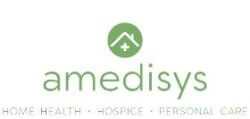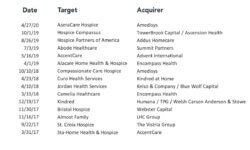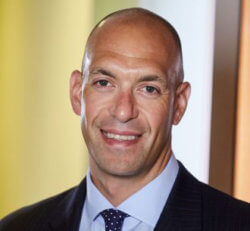July 8, 2020

Home Health Is Where the Growth Is: The Post-COVID Rise of Platform Solutions
Before the COVID-19 pandemic, the home healthcare sector was on the march. With financial pressures intensifying and value-based payment models advancing, providers and payers sought lower costs and better outcomes by decentralizing post-acute services (both in-person and virtual) to the home and community settings at their fastest pace yet.
Aligned trends and forces contributed to the surge in home healthcare utilization. Aging baby boomers often prefer to remain in their homes for as long as possible. New technologies, expanding services and improved coordination make care in the home and “aging in place” possible for a growing number of consumers with increasingly complex care needs. Changes in Medicare programming, including new supplemental benefits for home healthcare services, support value in service delivery.

COVID-19 disrupted some of that utilization. Hospitals suspended non-essential procedures, reducing the volume of patients needing post-acute home health services. Some patients and families balked at receiving care from outsiders in the home.
Yet, demand has remained strong and is projected to grow. Given COVID-19’s tragic impact on nursing homes, patients and referral sources will likely continue to avoid institutionalized care in long-term acute care (LTAC) and skilled nursing facilities (SNF) when possible. Home healthcare is well-positioned to play an ever-larger role in post-acute care going forward.
Smaller operators have struggled in this challenging environment. Many currently rely on government stimulus payments to stay in business, even as they find it hard to access PPE supplies, enforce protocols and update training.
Larger operators have the scale, resources, technology and clinical sophistication to ensure cost-effective, high quality, safe care delivery. They will be increasingly attractive to referral sources and patients, alike.
This dynamic presents an opportunity for larger operators to consolidate a highly fragmented sector and grow market share. Smart investment capital will fund operators with robust platforms and compelling strategies that meet evolving and increasingly complex market demand.
AccentCare and Amedisys represent two of the fastest growing home healthcare companies. While their service offerings are similar and their operational and financial performance over the past few years have been in lockstep and “up and to the right,” each’s strategic approach to the market is quite different.
AccentCare has invested heavily in large joint venture partnerships with heath systems and physician groups while Amedisys has pursued a payer-focused partnership strategy. The success of these divergent views illustrates the significant size and growth potential of the home healthcare sector, and the value of pluralistic approaches to market innovation.
The Robust Market for Home Health Services
Post-acute care is necessary for nearly half of all hospital stays. Of those patients, SNFs serve approximately 41% while 37% receive home health services. 12% receive care at LTAC and inpatient rehabilitation facilities. 9% receive outpatient rehabilitation services.
Home health is healthcare’s lowest-cost care delivery setting. Total home health care expenditures in the US are approximately $97B (2017). Medicare and Medicaid fund three quarters of that expenditure. Both programs will likely increase spending on home health well into the future.

The demand for those services rises with age. Seniors over 75 use triple the volume of services of younger Medicare beneficiaries. That cohort will grow by 50% over the next ten years.
Recognizing the need for more holistic and coordinated care delivery, the Bipartisan Budget Act of 2018 replaced the Prospective Payment System (PPS) for home care services with the Patient-Driven Groupings Model (PDGM). This new payment model reduces overtreatment by focusing on care outcomes, not the number of therapy visits.
CMS also expanded care coverage for Medicare Advantage (MA) beneficiaries in 2018, adding non-skilled, in-home care as a supplemental benefit. The MA population represents 33% of all Medicare beneficiaries and is growing in absolute numbers and as a percentage of overall Medicare beneficiaries.
Since Medicare Advantage plans receive a fixed risk-adjusted monthly payment to care for their members, they have strong financial incentives to control costs, reduce hospital readmissions, improve care quality and member satisfaction. Proactive home care delivery achieves better health and well-being for members at lower costs.
Traditionally, home healthcare has focused on post-acute skilled nursing, therapy, hospice care and personal care services. As payment models shift toward broader population health management, the range of home care services is expanding to address social determinants of health, including food, transportation, isolation and engagement. Technology is also an increasingly important component of care coordination and service delivery.
In this environment, winning home care companies will embrace consumerism, risk and strategic partnerships. Their business models will have the following characteristics:
- Highly personalized: with a deep, data-driven understanding of the individual consumer and their needs
- Tech-enabled: utilizing tools and solutions that support care and aging in place
- Integrated: connecting care across the acute and post-acute continuum while giving clinicians and care workers timely insights into ongoing needs
- Consumer-focused: coordinating a networked array of services that meet individual, community and market demands
AccentCare and Amedisys have both built their platforms to assemble these capabilities.
AccentCare: A Partner to Health Systems
Dallas-based AccentCare (founded in 1999 and owned by Advent International) is one of the largest privately-held home healthcare providers in the industry with over $1.0 billion total revenue. AccentCare serves 97,400 patients annually through 169 locations in 16 states, providing home health, personal care, hospice care, and medical home care services.

AccentCare’s strategic preference is to partner or joint venture with health systems and physician groups in large Metropolitan Service Areas (MSAs) to facilitate the integration of care delivery across settings. This approach reduces readmissions, length-of-stay, and overall costs while improving care quality and patient satisfaction. To date, AccentCare has five such partnerships, including two of the largest hospital joint ventures in the industry.
As CEO Steve Rodgers notes, “Health systems recognize more than ever the value of managing throughput and patient care with a reliable and consistent partner. Most have a lot of difficulty running post-acute businesses because they’re very different than managing acute operations.”
The AccentCare platform emphasizes integration, coordination, operating efficiency, centralized support and information, and clinical best practices. AccentCare approaches each joint venture relationship with a unique program design to drive clinical and financial outcomes for the health system or physician group partner.
AccentCare’s proprietary service model interventions, specialized care programs, innovative value-based care models and clinical and technological integration have resulted in:
- Significant reductions in re-hospitalizations and emergent care without hospitalizations.
- An increase in CMS Quality Star ratings.
- Robust revenue and EBITDA growth for their partners’ home health and hospice agencies.
AccentCare’s physician practice integration model has been particularly effective in driving success in value-based clinical and payment models. The company utilizes clinical liaisons (CLs) to coordinate patient care with physicians across all home health service lines. CLs facilitate admissions, track at-risk patients and manage care transitions. AccentCare then augments CL-physician interactions and proactive patient care through home visits, patient-specific outcomes reporting and tele-monitoring.
AccentCare passed a significant stress test during the COVID-19 pandemic. Robust communications informed both employees and patients on strategies for reducing infection risk. Centralized corporate functions and systems monitored business performance closely, managing intake volume, insurance authorization and COVID outbreaks via one channel. Close collaboration with joint venture partners provided insights into capacity management and future patient flow.
AccentCare’s model is efficient, profitable and scalable. Given the overall increase in chronic care and assisted living populations, AccentCare is well-positioned for organic growth, particularly as health systems seek strategic partners to provide value-based post-acute services under capitated payment models.
Amedisys: An Aging-In-Place Company
Based in Baton Rouge and founded in 1982, Amedisys is the third largest operator in the home healthcare sector with approximately $2.0 billion of total revenue, and 4.5% and 2.6% market share of the home health and hospice markets, respectively.

Amedisys views itself as an “aging in place” business, well-positioned to benefit from the evolution of care from hospital-centric services to the home. It has 322 care centers in 34 states. The company also operates hospice and personal care business lines.
For Amedisys, a successful aging-in-place strategy requires individualized care plans based on personalized health data. The company coordinates care teams, community resources and aligned service providers to serve patients holistically and comprehensively in their homes.
CEO Paul Kusserow is a big believer in the economic value of employee engagement and supportive business practices. As he notes, “If you have passionate employees driven by a sense of mission, particularly in service industries like healthcare, and give them the tools they need, you can unlock their energy and see productivity go through the roof.”
When Kusserow took the helm in 2014, Amedisys was struggling. It lost $100 million in 2013. Kusserow spent his first three months interviewing employees and patients. He routinely asked, “What makes an excellent home healthcare company?” He pressed to understand which services and approaches make the home a great environment for care.
From that informed, firsthand experience, Kusserow developed a strategy for becoming a provider of aging-in-place services. The value propositions were easy to align. As Kusserow observes, “When you look at the economics of keeping someone in the home versus in the hospital, it’s a no-brainer. And you’re doing what the consumer is asking you to do – they want to stay at home and age in place.”
Since his arrival, Amedisys’ operations, revenues and profits have soared. Employee turnover has dropped from 40% to 15%, revenues are up more than 50% to $2 billion, and net income increased to $127 million in 2019, up 6.7% from 2018. Kusserow and Amedisys are doing well by doing good.
Amedisys engages with health systems through traditional referral arrangements, but it sees the managed care companies as the lynch pin and partner of choice because, as Kusserow says, “They have the data and the resources.” Using such data, Amedisys can create individualized care plans and maintain connections to chronically ill patients long-term.
Amedisys is eager to embrace value-based care. As Kusserow declares,
I want to bet on our data and care plan. We’re also taking on risk where we can, from rehospitalization to SNF avoidance and medication adherence. We’re still 70% fee for service because that pays the bills, but this year between 20% and 25% of our service will be risk-based. As we move towards value, we want to get out of the episodic loop and build continuous care programs.
Amedisys is experimenting with different models for providing vital ancillary services, such as food delivery and transportation. In some cases, the company provides these services directly, but it’s more interested in partnering with expert vendors. This “platform” approach enables Amedisys to understand customer priorities and preferences (through data and engagement) and meet those needs in partnership with aligned and networked service providers.
Kusserow is confident about future prospects. “The healthcare world is starting to transition, and I believe we’re on the right side of history.”
Sector Consolidation and Service Evolution
Over the past 24 to 36 months, strategic acquirers and private equity firms have intensified M&A activity in the home health sector. Recent M&A activity includes acquisitions of Medicare, Medicaid, skilled, non-skilled, geriatric and pediatric businesses. The following chart shows notable examples.

Nevertheless, the sector remains highly fragmented. Of the 11,800 Medicare-certified home health agencies, the vast majority are small operators. Four publicly traded operators have more than 30% market share collectively. In order of size, they include Kindred at Home, LHC Group, Amedisys, and Encompass Health. Accent Care, with 2% market share, is the largest privately-owned operator.

Valuations for home health companies are at or near peak levels, as larger, more capable “platform” home health companies available for acquisition are scarce. Strategic buyers, like AccentCare and Amedisys, will aggressively seek acquisitions that accomplish the following:
- Enhance service capabilities
- Diversify payer mix
- Increase density and/or strengthen local presence in existing markets
- Expand into new geographic territories
- Take advantage of revenue and cost synergies
Private equity interest in acquiring home health companies is also high. “Rollups” are a proven PE strategy for creating value in fragmented industry sectors. Sponsors want to expand portfolios of aggregated home health companies by finding companies with positive earnings, established management teams and the capacity for growth.
Smaller, less capable home health companies are vulnerable to market forces, declining profitability and low valuations. AccentCare’s Steve Rodgers makes the following observations regarding this post-COVID period in the home health sector:
This is a distinguishing opportunity for what I’d call the ‘Tier One’ home health care companies. We have rigorous procedures and protocols. We have the ability to take patients out of health systems appropriately and help get them set up in their homes. And we can provide them with the type of service that makes health systems confident. There are only a few operators that can do that.
Given these trend-shaping forces in technology, payment and consumerism, winning operators are transforming a low-tech, high-touch sector into a flexible, personalized, coordinated, data-and tech-driven service business.
Data will inform operators of individualized consumer needs and preferences. Technology will enable even more people to heal and age in place in partnership with networked care platforms that enable providers to monitor, engage with and care for their patients.
These networked platforms will customize offerings from an expansive menu of services. Most importantly, the consumer/patient will truly be at the center of care, receiving personalized treatments, information and support that solve their health and healthcare needs.
Conclusion: The New Center for Care
The home health sector stands at a pivotal juncture. The drive to lower healthcare costs requires networked home healthcare services with holistic and comprehensive healthcare operating platforms. Sophisticated operators with scale can assemble the right mix of attributes to deliver accretive value through branded healthcare platforms.
In a market that remains highly fragmented, tier one home healthcare companies, like AccentCare and Amedisys, are well-positioned for growth. All relevant stakeholders (patients, physicians, hospitals and payers) will benefit from a value-driven expansion of the home health sector. Superior health, well-being and satisfaction will be its hallmarks.
Co-Author:
 Matt Margulies, Managing Director, leads Cain Brothers’ Home Health and Hospice, Home Infusion, Specialty Pharmacy, Distribution, and Respiratory Therapy/DME Advisory practices. His notable transactions since joining Cain Brothers in 2004 include the sale of Salveo Specialty Pharmacy to Catamaran, the sale of BioScrip’s Home Health Services Business to LHC Group, the sale of Home Solutions to KRG Capital Partners, the affiliation between Visiting Nurse Association of Boston and Atrius Health, and the sale of Professional HealthCare to Kindred Healthcare. He is a member of the firm’s President’s Advisory Council.
Matt Margulies, Managing Director, leads Cain Brothers’ Home Health and Hospice, Home Infusion, Specialty Pharmacy, Distribution, and Respiratory Therapy/DME Advisory practices. His notable transactions since joining Cain Brothers in 2004 include the sale of Salveo Specialty Pharmacy to Catamaran, the sale of BioScrip’s Home Health Services Business to LHC Group, the sale of Home Solutions to KRG Capital Partners, the affiliation between Visiting Nurse Association of Boston and Atrius Health, and the sale of Professional HealthCare to Kindred Healthcare. He is a member of the firm’s President’s Advisory Council.
Prior to joining Cain Brothers, Mr. Margulies spent 17 years at Lehman Brothers in that firm’s Global Healthcare Group, where he focused on supporting M&A advisory and public equity and debt capital transactions for clients in the healthcare services sector. Mr. Margulies graduated cum laude from Dartmouth College with a BA in Government (International Political Relations).





